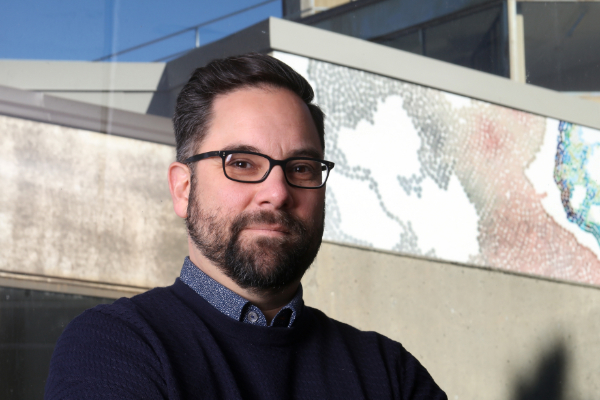Setting the stage for the artistic repatriation of Indigenous music
June 3, 2019
Share

In what may be a classical music first, the Canadian Opera Company (COC) and the National Arts Centre (NAC) are co-commissioning new music to replace part of a copyrighted musical work – the opera Louis Riel – to redress the misappropriation of a Nisga’a First Nations song. The decision follows a consultation process led by Queen’s University researcher Dylan Robinson that brought together Indigenous artists and community members, family and friends of the composer and librettist, and performers and artistic leadership of the NAC and COC, to discuss the song’s misuse, and how reparations should be made.
“I’m grateful for the COC and NAC’s work to support Nisg̱a’a Lisims Council of Elders’ request to remove the song from Louis Riel, and to commission Métis composer Ian Cusson to re-write this section of the opera,” says Dr. Robinson, a scholar of Stó:lō descent who holds the Canada Research Chair in Indigenous Arts. “This sets an important precedent for many other appropriated Indigenous songs that remain in contemporary compositions and arrangements.”
In 1967, when composer Harry Somers wrote Louis Riel, he decided to use his previously written composition, “Kuyas”, to open the third act of the opera. Kuyas is based on a Nisga’a song—a lim’ooy̓, or funeral dirge—recorded and transcribed by Marius Barbeau and Ernest MacMillan in 1927. The song is one of hundreds of First Nations songs collected by ethnographers during the early 20th century. The majority of these songs were collected during the Indian Act’s potlatch ban from 1885-1951, where First Nations on the northwest coast were prohibited from gathering to practice their cultural traditions.
June is Indigenous History Month in Canada.
In recognition of this the Gazette is highlighting a number of articles throughout the month.
To learn more about Indigenous Supports at Queen’s University, visit the Inclusive Queen’s webpage.
Information is also available at the Four Directions Indigenous Student Centre website.
As a recent repatriation policy by the Royal BC Museum outlines, much of the material and intangible cultural heritage (including songs) were collected under duress. Indigenous people allowed ethnographers to record their songs during the time of the potlatch ban with the understanding that doing so would keep them safe for future generations of Indigenous people. Many of those who shared were unaware that the songs might be used in future compositions without their consent, and in contravention of Indigenous law.
“To sing this lament in other contexts, and without the appropriate rights to do so, goes against Nisga’a law,” says Dr. Robinson. “More broadly, Indigenous songs are often forms of law, medicine, teachings, personal family history, and are considered to have life themselves. This means that their mis-use is not only appropriation; for Indigenous peoples, hearing this most cherished aspect of our culture ‘broken apart’ can be a traumatic experience.”
Cusson, who is currently composer in residence with the COC, says he intends to create music to replace the Nisga’a song that will be faithful to the original intentions of the opera’s creators, Somers and librettist Mavor Moore.
“I am so thankful to be a part of this important and historic work of seeing this song return to the Nisg̱a’a people,” he says. “That the COC and NAC, two of Canada’s largest arts organizations, are partnering with the Moore and Somers families to enable this important act of musical redress, points to their leadership in the furthering of relations with Canada’s Indigenous peoples.”
The completed new work will be debuted by the National Arts Centre Orchestra at a concert celebrating the work of some of Canada’s leading Indigenous composers, on September 19, 2019 in Ottawa.
“This process serves as a great example of how Indigenous-led work with institutions can lead to substantive change,” says Dr. Robinson, “especially as we increase our efforts to repatriate songs back to our communities, and to foster resurgence through new Indigenous artwork. People are often surprised to learn that most Indigenous songs used in classical music were used without permission of those families and individuals who hold the exclusive rights to sing them. Many of our songs remain trapped within classical music pieces, and so much work remains to be done.”